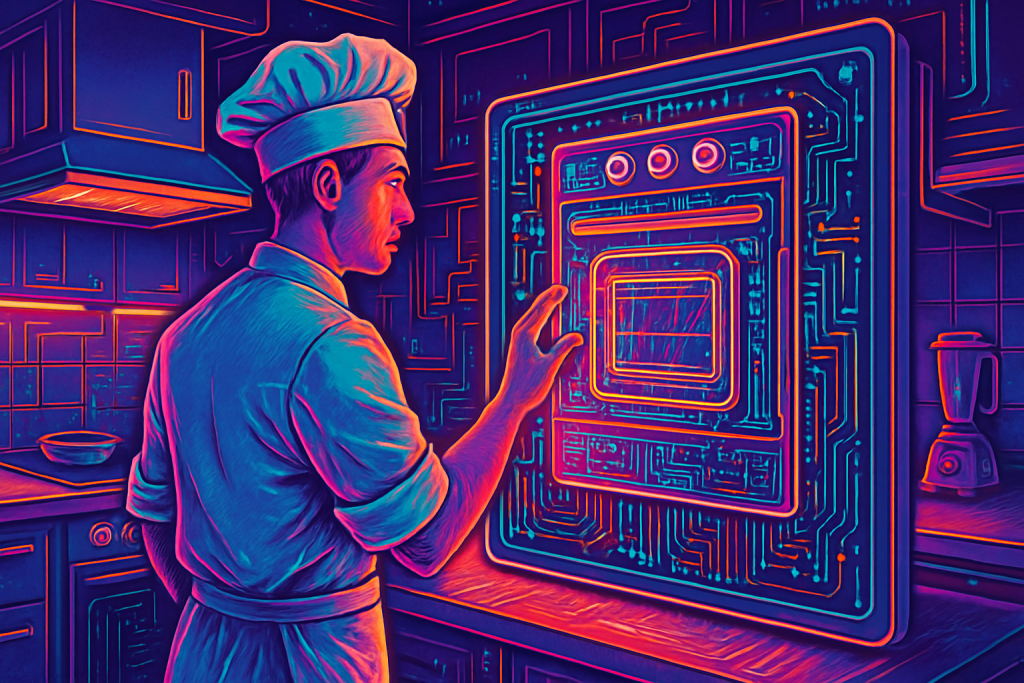In a move that sent shockwaves through Silicon Valley and beyond, OpenAI, the wizards behind GPT-42 (okay, maybe not quite 42, but you get the idea), just announced a groundbreaking partnership with Broadcom to design and manufacture their own custom AI chips. Yes, you read that right. The company that’s been making our chatbots smarter and our art generation more…artistic…is now getting into the hardware game. Mass production is slated for 2026, meaning we’re just a hop, skip, and a jump away from a world powered by OpenAI’s silicon.
This isn’t just some minor tweak or a new software update. This is OpenAI planting its flag firmly in the hardware landscape, signaling a major shift in the AI world. It’s like watching a rock band suddenly decide to build their own guitars. Why now? What does this mean for the future of AI? And should Nvidia be sweating bullets?
To understand the magnitude of this announcement, we need to rewind a bit. OpenAI, like many AI powerhouses, has been heavily reliant on existing chip manufacturers, primarily Nvidia, for the immense computing power needed to train and run its increasingly complex AI models. Think of it like this: OpenAI is the chef, creating exquisite culinary masterpieces. Nvidia has been supplying the ovens. But what happens when the chef decides they can build a better, faster, more efficient oven themselves? That’s essentially what’s happening here.
The hunger for computational power in the AI world is insatiable. Each new iteration of a large language model, each leap in image generation, demands exponentially more processing muscle. Training these models is akin to running a small country’s energy grid. This reliance on third-party hardware creates bottlenecks and dependencies. OpenAI wants more control, more efficiency, and potentially, lower costs. They’re tired of waiting in line for the latest GPUs; they want their own dedicated AI super-weapon, forged in the fires of their own innovation.
The partnership with Broadcom is key. Broadcom, a semiconductor giant with a long history of designing custom chips for various industries, brings the expertise and manufacturing capabilities that OpenAI lacks. It’s a marriage of AI brilliance and hardware prowess. Together, they’ll be crafting silicon specifically tailored to OpenAI’s unique AI workloads. Imagine a chip optimized for the specific algorithms and architectures that power GPT-whatever-number-they’re-on. The potential performance gains are staggering. Think of it as moving from a one-size-fits-all suit to a bespoke, tailored masterpiece.
But the implications extend far beyond just faster processing speeds. This move is a strategic power play. By designing their own chips, OpenAI can potentially reduce their reliance on Nvidia, mitigating supply chain risks and potentially lowering costs. In a world where AI is becoming increasingly central to everything from healthcare to finance, controlling the underlying infrastructure is paramount. It’s about securing their position at the top of the AI food chain.
The ripple effects of this partnership will be felt throughout the industry. Other AI companies will undoubtedly be watching closely, evaluating whether to follow suit and invest in custom hardware. We may see a new era of hardware-software co-optimization, where AI models and the chips that power them are designed in tandem, leading to unprecedented levels of performance and efficiency. It’s a bit like the old days of Apple, where they controlled both the hardware and software for a more streamlined experience. Only this time, the stakes are much, much higher.
Of course, this venture isn’t without its risks. Designing and manufacturing chips is a complex and expensive undertaking. OpenAI is venturing into territory that is traditionally the domain of specialized hardware companies. They’ll need to navigate the intricacies of semiconductor manufacturing, manage complex supply chains, and compete with established players. It’s a bold gamble, but one that could pay off handsomely if successful.
From a political and societal perspective, this move raises interesting questions about the concentration of power in the AI industry. As a few dominant players like OpenAI gain even greater control over both the software and hardware that power AI, concerns about bias, transparency, and accountability will only intensify. It’s a reminder that the development of AI isn’t just a technological endeavor; it’s a societal one, with profound implications for our future.
Ethically, the development of custom AI chips raises questions about the potential for misuse. More powerful AI could be used for both good and evil, from curing diseases to creating sophisticated surveillance systems. It’s crucial that we have robust ethical frameworks and regulations in place to ensure that AI is used responsibly and for the benefit of humanity.
Financially, the OpenAI-Broadcom partnership could have a significant impact on the semiconductor market. While Nvidia remains the dominant player in the AI chip space, OpenAI’s move could spur greater competition and innovation, potentially leading to lower prices and more diverse hardware options. It’s a wake-up call for the industry, a sign that the AI revolution is not just about software; it’s about hardware too.
So, what’s the bottom line? OpenAI’s partnership with Broadcom is a game-changer. It’s a bold move that could reshape the AI landscape and accelerate the development of even more powerful and sophisticated AI systems. It’s a reminder that the future of AI is not just about algorithms and data; it’s about the silicon that powers them. Buckle up, folks. The AI revolution is just getting started, and it’s about to get a whole lot more interesting.
Discover more from Just Buzz
Subscribe to get the latest posts sent to your email.


